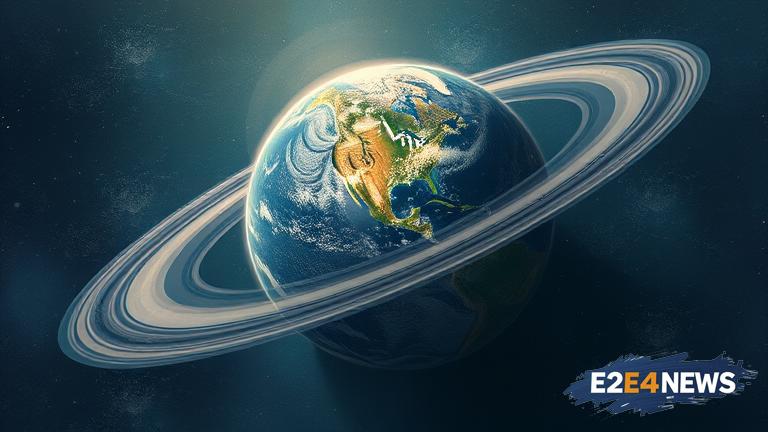The Earth’s rotation has been a subject of fascination for centuries, with scientists continually monitoring its speed and patterns. Recently, it has been observed that the Earth’s spin has accelerated, resulting in one of the shortest days on record. This phenomenon has sparked curiosity and debate among scientists and the general public alike. The Earth’s rotation is influenced by various factors, including the planet’s slightly ellipsoidal shape, the movement of the tides, and the effects of the atmosphere and oceans. The rotation of the Earth is also affected by the gravitational pull of the Moon and the Sun. The shorter day has been attributed to the Earth’s rotation speeding up, with the planet completing one rotation on its axis in less than 24 hours. This has resulted in a shorter day, with the duration of a day being approximately 1.59 milliseconds shorter than the standard 24-hour period. The phenomenon of a shorter day has been observed and recorded by scientists using advanced technology and equipment. The Earth’s rotation is not always constant, with variations occurring over time due to various geological and astronomical factors. The shorter day has sparked interest and discussion among scientists, with some speculating about the potential causes and implications of this phenomenon. While the shorter day may not have a significant impact on our daily lives, it does highlight the dynamic and complex nature of the Earth’s rotation. The study of the Earth’s rotation is essential for understanding various geological and astronomical processes, including the movement of the tides, the formation of day and night, and the behavior of the planet’s magnetic field. Scientists use various methods to measure the Earth’s rotation, including the use of atomic clocks, satellite laser ranging, and very long baseline interferometry. The data collected from these measurements helps scientists to better understand the Earth’s rotation and its variations over time. The Earth’s rotation is also influenced by the planet’s slightly ellipsoidal shape, with the equatorial radius being approximately 6,378 kilometers and the polar radius being approximately 6,357 kilometers. The difference in radius between the equator and the poles results in a slightly faster rotation at the equator, which in turn affects the length of a day. The movement of the tides also plays a role in the Earth’s rotation, with the gravitational pull of the Moon causing a slight slowing down of the planet’s rotation. The effects of the atmosphere and oceans on the Earth’s rotation are also significant, with the movement of air masses and ocean currents contributing to the planet’s rotational speed. The gravitational pull of the Sun also has an impact on the Earth’s rotation, although this effect is relatively small compared to the Moon’s gravitational pull. The study of the Earth’s rotation is a complex and multidisciplinary field, involving the collaboration of scientists from various backgrounds, including geology, astronomy, physics, and mathematics. The phenomenon of a shorter day has highlighted the importance of continued research and monitoring of the Earth’s rotation, with scientists working to better understand the underlying causes and implications of this phenomenon. Further research is needed to fully understand the factors contributing to the Earth’s rotation and its variations over time. The Earth’s rotation is a fascinating and complex topic, with ongoing research and discoveries continually expanding our knowledge and understanding of this phenomenon.
